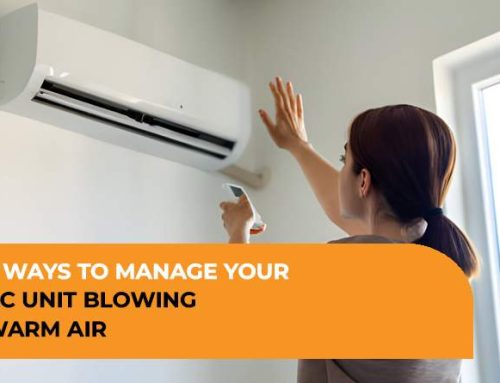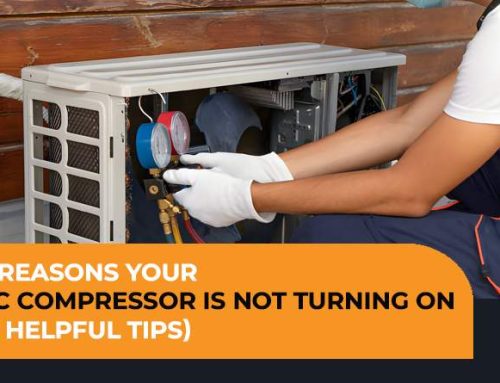Experiencing your air conditioner’s frozen pipe during a hot summer might seem strange. A frozen air conditioner isn’t just a tiny problem; it’s a big deal that needs fixing fast.
If you notice your AC acting up, especially if you see ice, it’s time to do something about it. Don’t worry; we are here to help you solve your AC frozen pipe outside unit and keep your home cool and comfy.
9 Reasons You See Ice On Your AC Pipe
When we say an air conditioner is “frozen,” it indicates that ice has accumulated on the coil. Let’s understand why this freezing pipe occurs:
1- Low Refrigerant Levels
The system’s pressure declines when refrigerant levels are low due to leaks or incorrect installation. This decrease in pressure allows the remaining refrigerant to expand as it goes through the evaporator coil, resulting in a drop in temperature.
As a result, the moisture surrounding the coil freezes, forming frost on the pipe and potentially harming the system.
2- Poor Airflow
When airflow becomes restricted, such as by a clogged air filter, blocked vents, or a faulty blower fan, the evaporator coil does not receive enough warm air to absorb heat effectively.
3- Dirty Coils
The dirt, dust, and other debris the AC coils gather over time can isolate them from the air they need to cool.
The coils get overly chilly when this insulation happens because they are unable to absorb heat as well. Reduced cooling capacity and ice development on the pipe result from moisture in the air condensing and freezing on the coil.
4- Faulty Thermostat
If the thermostat isn’t working correctly and continues to direct the air conditioner to run, the evaporator coil could get too chilly.
Without enough cycling, the coil may freeze, resulting in ice buildup on the pipe and perhaps harming other system parts.
5- Issues with the Expansion Valve
Expansion valve malfunctions or jams open can let excessive refrigerant into the coil.
Because of the excessive amount of refrigerant, the coil gets excessively cold, which causes ice and condensation to form on the pipe.
6- Outdoor Temperature
Specific temperature ranges are required for air conditioning systems to function. It may be difficult for the outdoor unit to effectively dissipate heat below and even below-freezing temperatures.
Ice forms on the pipe when the refrigerant returns to the interior unit too cold due to insufficient heat escaping from the condenser coil.
7- Defective Defrost Control
In particular air conditioning systems, a defrost control mechanism occasionally reverses the refrigerant flow to avoid ice formation on the outside coil.
Freezing problems may arise if this defrost control malfunctions or does not work correctly, causing ice to build up on the coil and spread to the refrigerant lines.
8- Leaking Ducts
Ductwork is essential to distribute cooled air across a structure. Warm, humid air from the outside might enter ducts if leaks or cracks exist.
This warm air inflow may make the evaporator coil too chilly, forming ice on the pipe.
9- Blocked Drainage
Air conditioners create condensate by removing moisture from the air. This condensate must be drained from the indoor unit to avoid water damage and mould growth.
A clogged or congested drainage system may cause water to build up on the evaporator coil, which may freeze and form ice on the pipe.
10 Things to Fix Your Air Conditioner Frozen Pipe
Let’s explore the steps you may take to protect your HVAC system from possible damage:
1- Turn Off the AC
It is essential to turn off the air conditioner to stop additional harm. Maintaining the system when a pipe is frozen might stress the compressor and other parts, sometimes requiring expensive repairs.
The first step in fixing the problem is letting the ice thaw naturally by turning off the air conditioning.
You can also understand when you should tune up your AC system for summer.
2- Check Refrigerant Levels
Low refrigerant levels frequently cause freezing pipes. Before adding the proper amount of refrigerant to the system, a qualified HVAC expert should check for leaks and fix them.
Appropriate quantities of refrigerant guarantee that the system can efficiently take in and release heat without freezing the coil by making it too cold.
3- Improve Airflow
The evaporator coil doesn’t freeze when there is enough airflow. To prevent airflow restriction and an excessively cold coil, start by changing any filthy air filters. Ensure the blower fan works correctly and no impediments block the vents.
The evaporator coil can absorb enough warm air with proper airflow to keep condensation from freezing on the pipe.
4- Clean Coils
The evaporator and condenser coils may get insulated by dirty coils, making it difficult for them to collect and release heat efficiently.
Thorough cleaning of the coils makes them free of dirt, dust, and debris, which improves their performance. It lessens the possibility that the coil will get too cold and moisture will freeze on the pipe.
5- Check Thermostat
Freezing problems can occur from an air conditioner running nonstop due to a broken thermostat.
Check that the AC is being cycled on and off by the thermostat to maintain the desired temperature. To avoid such issues, have the thermostat fixed or replaced by a trained specialist if it malfunctions.
6- Inspect Expansion Valve
The coil may freeze if the expansion valve is malfunctioning or stuck open, allowing excessive refrigerant to enter.
A specialist should examine the expansion valve to guarantee appropriate refrigerant flow and make any required repairs.
7- Consider Outdoor Temperature
Freezing problems might result from the exterior unit’s inability to distribute heat effectively in frigid weather.
Taking precautions decreases the chance of pipes freezing and ice formation on the coil.
8- Test Defrost Control
If your AC unit’s defrost control mechanism is there, ensure it’s working correctly by testing it. Sometimes, by reversing the refrigerant flow, the defrost control helps avoid ice accumulation on the exterior coil.
To prevent freezing problems, fix or replace the defrost control if broken.
9- Seal Leaky Ducts
The environment’s warm, humid air can be drawn in via leaky ducts, making the evaporator coil unbearably cold.
Sealing ducts properly helps keep airflow constant and avoid freezing problems.
10- Clear Drainage
Ensure the condensate drainage system is accurate and precise to avoid water build-up and freezing on the evaporator coil. Check for obstructions or clogs in the condensate drain pipe and remove them as necessary.
Call a Professional!
To save your HVAC system, you must take quick action if your air conditioner is frozen. Think about making an appointment with The Bee Heat and AC experts. We offer professional AC maintenance services to keep your house cool during the summer.
People Also Ask!
Why does ice form on my air conditioner’s evaporator coil?
Ice forms on the evaporator coil when it gets too cold due to low refrigerant levels or restricted airflow.
Can I still use my air conditioner if it’s frozen?
It’s best to turn off the AC to prevent further damage. Let the ice thaw naturally, or seek professional help to fix the issue.
How can I avoid having my air conditioner freeze?
Regularly check and replace air filters, ensure proper airflow, and schedule routine maintenance with a qualified technician to prevent issues leading to freezing.


